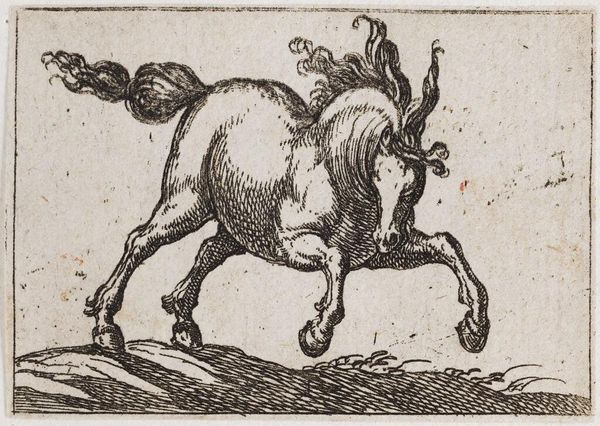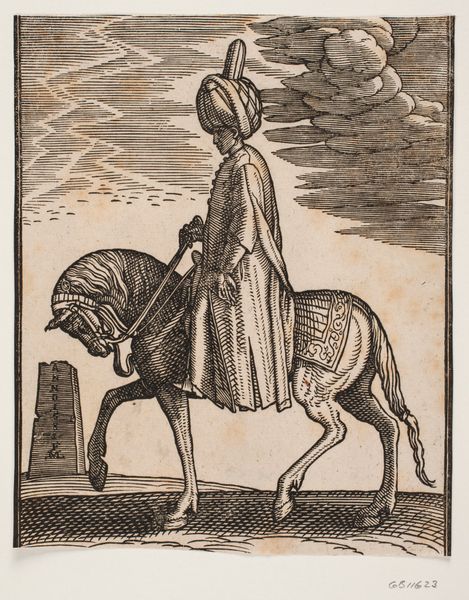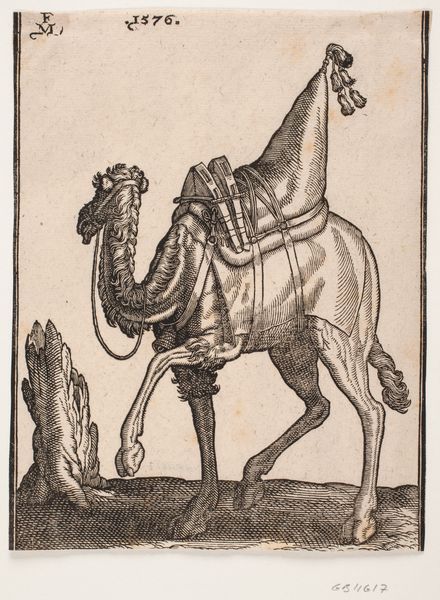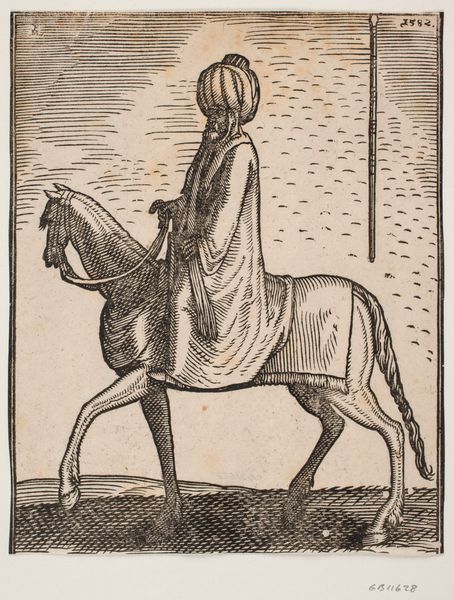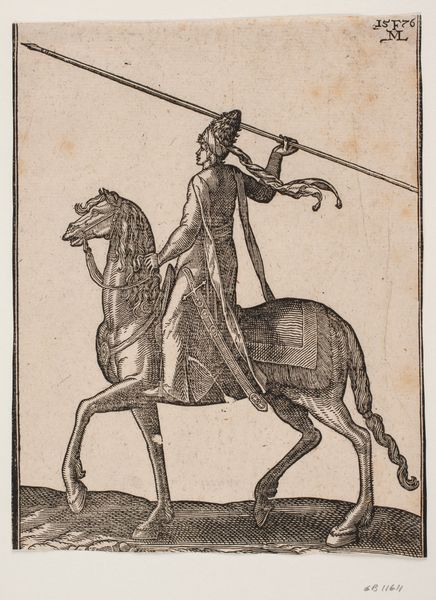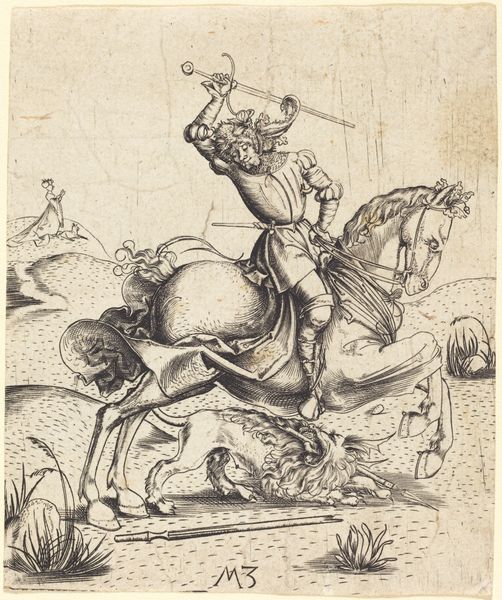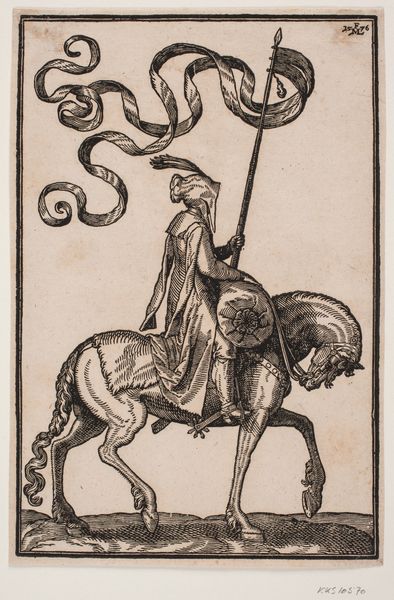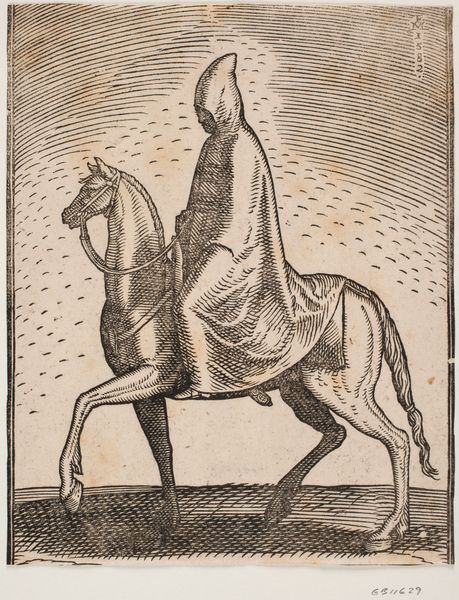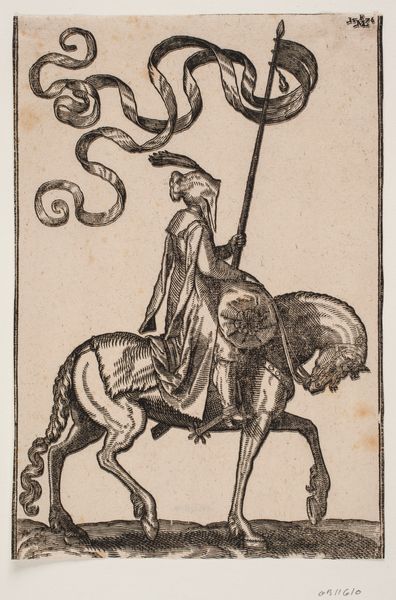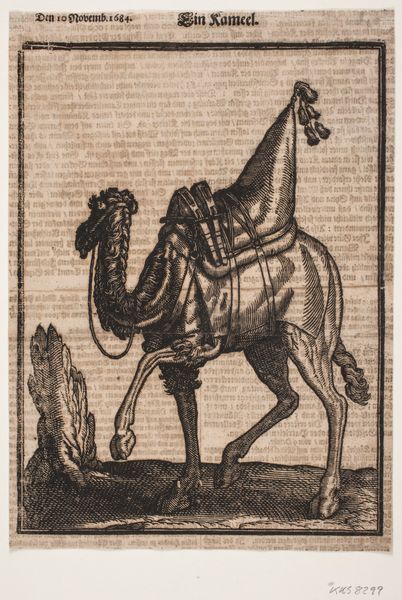
Hest med rytter og to kugleformede kurve til transport af grøntsager 1581
0:00
0:00
print, woodcut
# print
#
asian-art
#
landscape
#
mannerism
#
woodcut
#
genre-painting
Dimensions: 197 mm (height) x 171 mm (width) (bladmaal)
Curator: The weight this horse is carrying is incredible! It looks as if it's been completely consumed by these spherical containers. What am I even looking at? Editor: We are observing Melchior Lorck’s 1581 woodcut, "Horse with rider and two spherical baskets for transporting vegetables.” The title suggests practical functionality. What you are responding to viscerally might reflect the work's engagement with orientalism and power dynamics present in late 16th-century Europe. Curator: Orientalism? Interesting, it's also undeniably peculiar to my modern eyes. It's fascinating how he portrays the horse. The sheer scale of those baskets makes the scene feel… distorted and, if I can say so, comical. Are the baskets meant to appear empty, or do you imagine a dense load of vegetables? Editor: Those rounded forms do give it a caricatured feel, a slight unreality, that plays on visual tropes familiar in images from the Ottoman Empire at the time. As for the contents of those bulging baskets, my sense is that those rounded shapes create an important formal echo through the piece— the horse’s body almost continues upward in these two massive almost perfectly symmetrical bulges—but regardless of if the vegetables are heavy or light, they impact this horse and rider as an image and what their encounter with a European audience meant at that time. Curator: I appreciate your connecting that shape with a broader narrative, the baskets mirroring and almost eclipsing the horse’s body. Looking closely at the rider, he brandishes a whip, further underlining those power imbalances and a kind of dominance. What’s going on with that turban? Is there a cultural significance that helps define him through clothing and accessories? Editor: Absolutely, that turban serves as an instant marker of the rider’s cultural and perhaps religious identity. Within the visual language of the 16th century, dress functioned as a powerful shorthand for conveying "otherness" – constructing identities that are simultaneously exoticized and potentially threatening to European viewers. That whip suggests exertion. A lot of effort is required on the part of both the horse and rider to get to their destination. What goods are they transporting and who is on the receiving end of these exotic “goods”? Curator: So this isn’t simply a snapshot of daily life, but a complex statement about cultural exchange and the fraught power relations that underpinned it at the time. What initially struck me as strange is really just part of the complex messaging from Melchior Lorck. I will never unsee the orientalism! Editor: Indeed! By considering that layer, Lorck’s woodcut allows us to confront the visual stereotypes that have historically shaped our understanding.
Comments
No comments
Be the first to comment and join the conversation on the ultimate creative platform.


